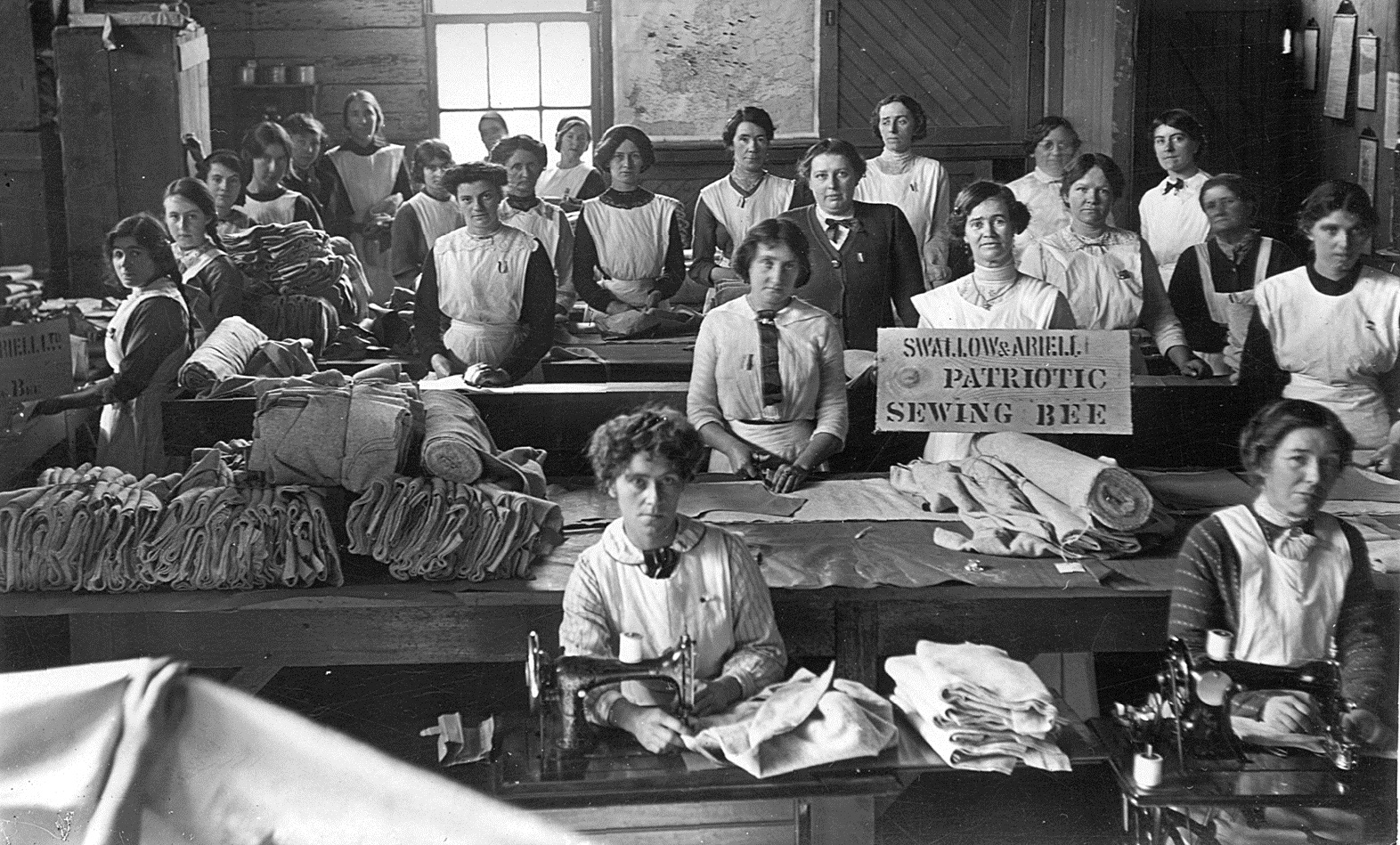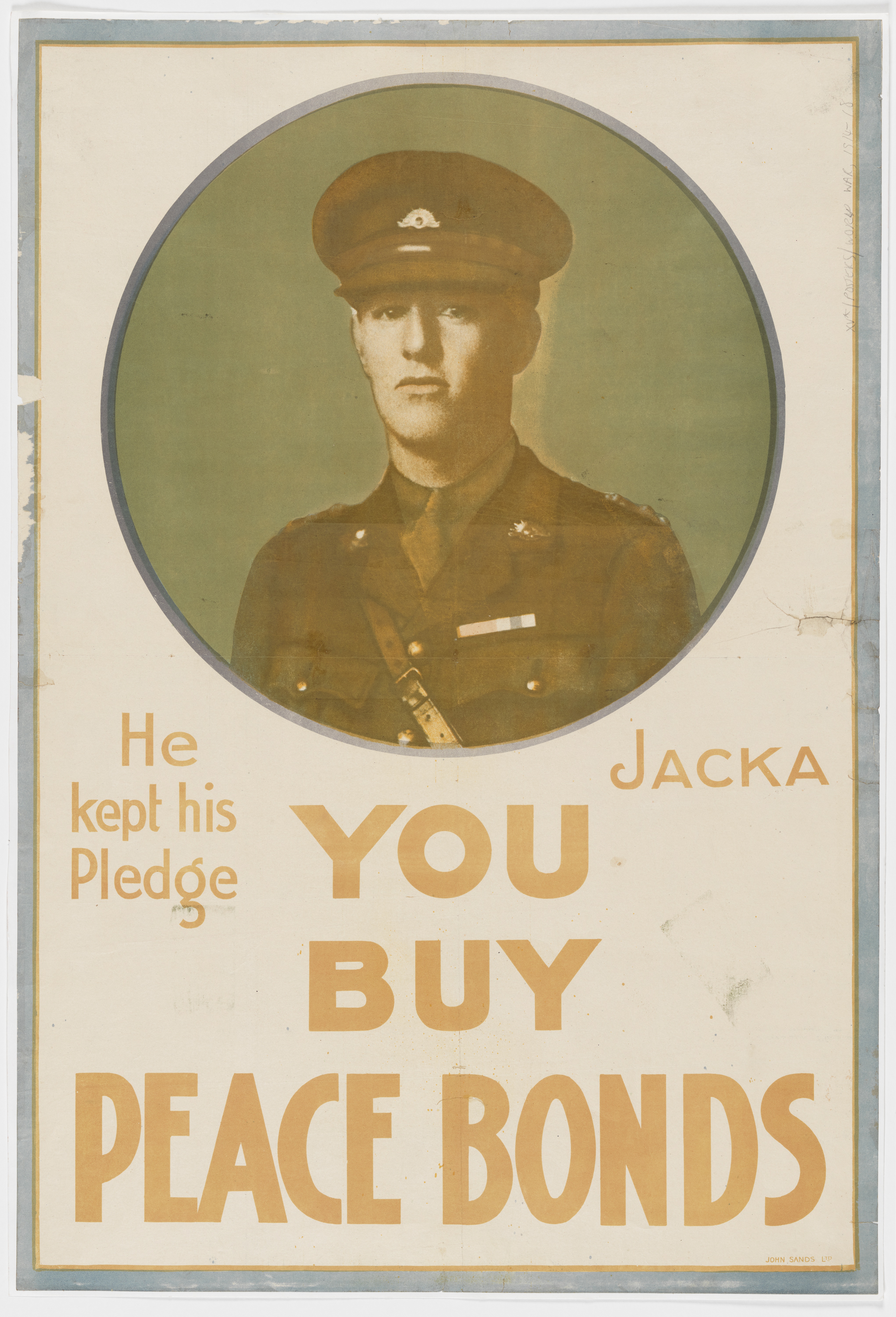



Source: Public Record Office Victoria
Though no active military action in World War I took place in Australia, those left behind were not without their duties, participating in what has been called The Home Front. From fundraising to manufacturing to care packages, Australians back at home helped the war effort in many ways. Read through the resources below to learn more about The Home Front.
While the men were fighting overseas women were expected to keep things going at home. Women were also actively encouraged to support the war effort by joining voluntary organisations to raise money for the war and to provide comforts for the troops. Read through this website to learn how women and other Australians supported the war effort from home.
This website links to numerous articles about different aspects of the homefront, including the role of women, political changes, sport and the threat of espionage.
This website looks at the numerous ways all sectors of Australian society participated in the war effort, from women to farmers to school students. It also includes links to primary sources.
Australians responded to the declaration of war in August 1914 with enthusiasm. Volunteers rushed to enlist, eager to share in the action and adventure, many believing it would be over by Christmas. Others formed committees to raise funds for the troops. This collection of primary sources portrays life on the home front. In between fundraising efforts and the manufacture of bullet cartridges are images of distractions from the war like shopping, weddings and sporting events. You can see the first Anzac Day, a propaganda cartoon and a pro-conscription film featuring Prime Minister Billy Hughes. This collection also reflects a society in transition - notably with expanded opportunities for women while the men were fighting overseas.
The scale of Australian military losses in World War I is well known. From a population of fewer than 5 million, more than 62,000 men and women died, and over 150,000 were wounded. Less widely known, however, is the profound damage that the war inflicted on the Australian home front. Read through this article to learn more about the damage and losses felt at home.
This website describes the tireless voluntary work by women during World War I: an endless series of fundraising campaigns to supply ‘comforts’ for soldiers fighting at the front, to provide relief for some of the millions of Allied refugees in Europe, and to help maimed soldiers on their return home and support soldiers’ dependants. Smaller stories introduce individual creators of patriotic poetry, music and silent movies and the indefatigable activity of the sock-knitter, while a counter narrative examines the anti-war activism of a member of the Women’s Peace Army.
The wars in which Australia has been involved have had profound effects on the lives of those at home in South Australia. This collection includes summaries of some of the duties performed by South Australians on the home front, as well as a collection of primary sources.
When World War I broke out, the place of women in Australian society fitted the typical stereotype. They generally stayed at home to look after the house and any children. During the war, many women took on different roles:
Read through this resource to learn more about the role of women, and especially the roles they played on the home front.
During the war almost 7000 people were interned by the Australian government in the interest of national security. The government considered the interned as ‘enemy aliens’. Initially, the interned were men, women and children who were born in countries that were at war with Australia. As the war went on the government also interned “people of enemy nations who were naturalised British subjects, Australian-born descendants of migrants born in enemy nations and others who were thought to pose a threat to Australia's security”. Most of the people who were interned in Australia were German.
The outbreak of fighting in Europe in August 1914 immediately brought Australia into the Great War. Within one week of the declaration of war, all German subjects in Australia were declared ‘enemy aliens’ and were required to report to the Government and notify their address. Many were put in internment camps like Trial Bay. Read through this website to learn more about Trial Bay.
The First World War affected every part of Australian society. Nearly 417,000 men enlisted, while large numbers of women were recruited into jobs that had been vacated. Children were also expected to contribute to the war effort. Read through this article to learn more.


Albert Jacka VC ... was an Australian recipient of the Victoria Cross, the highest decoration for gallantry "in the face of the enemy" that can be awarded to members of the British and Commonwealth armed forces. Jacka was the first Australian to be decorated with the VC during the First World War, receiving the medal for his actions during the Gallipoli Campaign. He later served on the Western Front and was twice further decorated for his bravery.

Soldiers received their basic uniform and equipment from the government, but many other smaller items, such as socks were provided by charitable groups such as this. The Herald 15th August 1914


 Australians at home : World War I
by
Australians at home : World War I
by
 Home front
by
Home front
by
 Women at home and war 1900-1945
by
Women at home and war 1900-1945
by